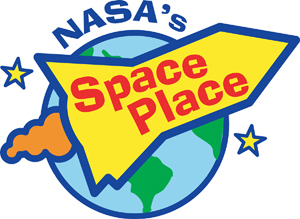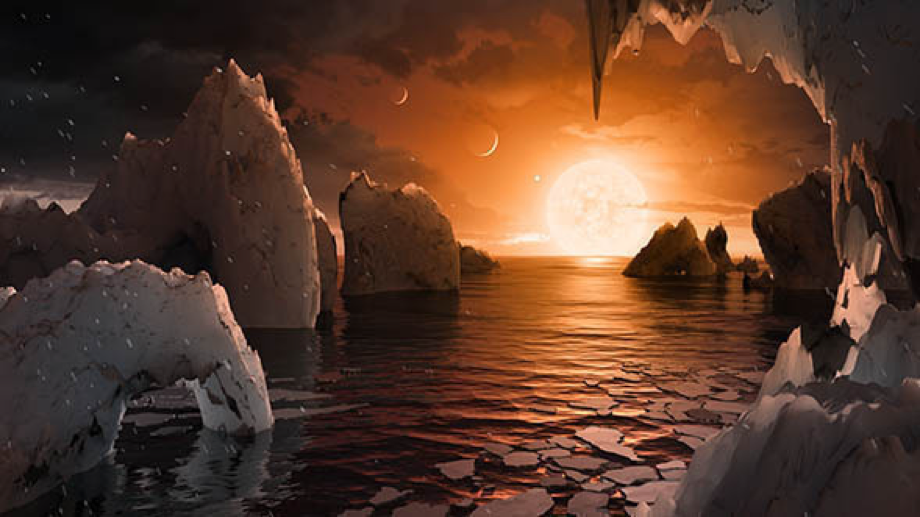With seven Earth-sized planets that could harbor liquid water on their rocky, solid surfaces, the TRAPPIST-1 planetary system might feel familiar. Yet the system, recently studied by NASA’s Spitzer Space Telescope, is unmistakably alien: compact enough to fit inside Mercury’s orbit, and surrounds an ultra-cool dwarf star—not much bigger than Jupiter and much cooler than the sun.
If you stood on one of these worlds, the sky overhead would look quite different from our own. Depending on which planet you’re on, the star would appear several times bigger than the sun. You would feel its warmth, but because it shines stronger in the infrared, it would appear disproportionately dim.
“It would be a sort of an orangish-salmon color—basically close to the color of a low-wattage light bulb,” says Robert Hurt, a visualization scientist for Caltech/IPAC, a NASA partner. Due to the lack of blue light from the star, the sky would be bathed in a pastel, orange hue.
But that’s only if you’re on the light side of the planet. Because the worlds are so close to their star, they’re tidally locked so that the same side faces the star at all times, like how the Man on the Moon always watches Earth. If you’re on the planet’s dark side, you’d be enveloped in perpetual darkness—maybe a good thing if you’re an avid stargazer.
If you’re on some of the farther planets, though, the dark side might be too cold to survive. But on some of the inner planets, the dark side may be the only comfortable place, as the light side might be inhospitably hot.
On any of the middle planets, the light side would offer a dramatic view of the inner planets as crescents, appearing even bigger than the moon on closest approach. The planets only take a few days to orbit TRAPPIST-1, so from most planets, you can enjoy eclipses multiple times a week (they’d be more like transits, though, since they wouldn’t cover the whole star).
Looking away from the star on the dark side, you would see the outer-most planets in their full illuminated glory. They would be so close—only a few times the Earth-moon distance—that you could see continents, clouds, and other surface features.
The constellations in the background would appear as if someone had bumped into them, jostling the stars—a perspective skewed by the 40-light-years between TRAPPIST-1 and Earth. Orion’s belt is no longer aligned. One of his shoulders is lowered.
And, with the help of binoculars, you might even spot the sun as an inconspicuous yellow star: far, faint, but familiar.
Want to teach kids about exoplanets? Go to the NASA Space Place and see our video called, “Searching for other planets like ours”: https://spaceplace.nasa.gov/exoplanet-snap/
This artist’s concept allows us to imagine what it would be like to stand on the surface of the exoplanet TRAPPIST-1f, located in the TRAPPIST-1 system in the constellation Aquarius. Credit: NASA/JPL-Caltech/T. Pyle (IPAC)
This article is provided by NASA Space Place.
With articles, activities, crafts, games, and lesson plans, NASA Space Place encourages everyone to get excited about science and technology. Visit spaceplace.nasa.gov to explore space and Earth science!


